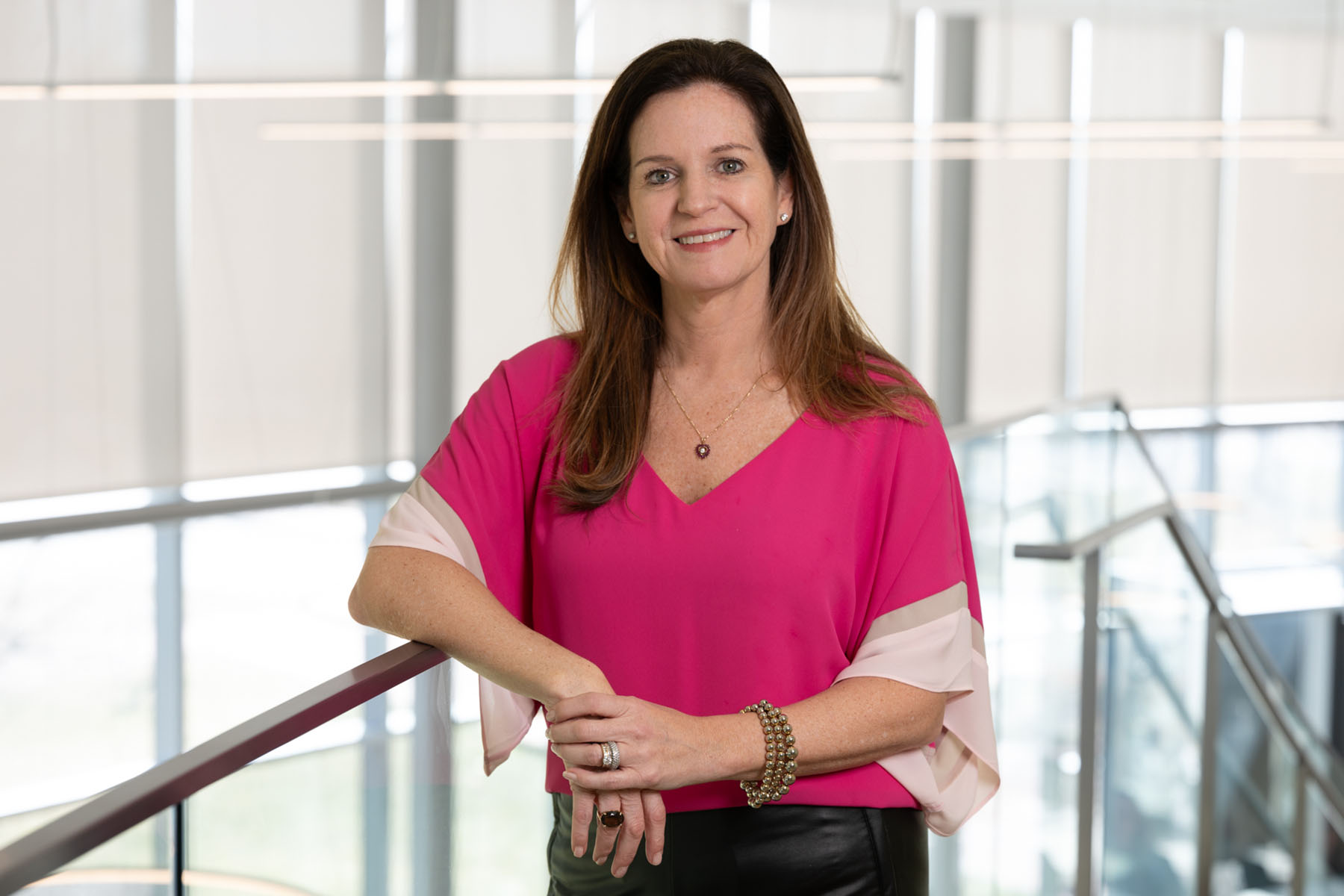As a lecturer of finance at Bryant University in Rhode Island, there’s one trend that Mara Derderian would like to see change: the lack of women in her courses.
“What I see is very few women entering into the field of finance,” she said. “I started to wonder why because I actually was a finance major myself at the same university, and I just couldn’t understand what the disconnect was.”
As part of her ongoing efforts to address the disparities, Derderian has organized a four-day retreat for May in which her students will have the chance to hear from women in finance, tour the Federal Reserve, and attend recruiting events at Goldman Sachs and Bank of America.
The gender imbalance in finance courses isn’t a matter of women not being smart enough to handle the subject matter, Derderian said. Rather, the issue is systemic.
Derderian is the director of the financial planning program for undergraduates working towards their certified financial planner designation. She teaches courses including financial management, risk management, and insurance and securities brokerage. In her upper-level finance classes, women typically make up no more than 18 to 20 percent of students. The problem isn’t unique to Bryant. The University of Connecticut last year launched a “Women in Finance” course because women made up only 29 percent of finance majors there, even though half of business majors nationwide are women, according to the institution.
Women have traditionally lacked role models in finance. In fact, the Official Monetary and Financial Institutions Forum, a think tank focused on central banks and financial institutions, forecast in a 2023 report that it would take 140 years for the financial sector to reach gender parity. For a decade, it has issued a gender balance index that assesses how many women and men have senior roles in the industry. Last year’s index found that women represented just 19 percent of top executives among the 50 commercial banks they studied worldwide — and that was an improvement over 2022. Similarly, American Banker magazine reported in December that under 5 percent of publicly traded banks have women leaders.
Derderian, a former vice president at Citi Private Bank and HSBC Private Bank, supports the use of mentorship to inspire young women to consider careers in finance. She has also invited high school girls to participate in portions of the retreat. Most states now have legislation requiring school districts to provide financial literacy courses, with half of states making the completion of such courses a graduation requirement.
During a recent visit to a high school, “the questions they asked blew my mind,” Derderian said of the students. “I mean, they were asking questions about Roth IRAs and traditional IRAs. When I was 16, I had no idea what those things were. So I see the benefit of that education at an early age. It’s making people curious.”
While high school students will take part in the retreat, the event has largely been designed for “rising juniors and seniors” at Bryant, Derderian said. These students are now at a point in their education where they can focus on specific classes within the finance major that speak to their career aspirations, so she wanted to give them an overview of the possibilities.
What’s more, Derderian said, she wants students to hear from women who have already experienced challenges they may be facing now. “I wanted to bring together women in the industry to come and talk about their journey, how they ended up where they are, what obstacles they found, what opportunities they were able to take advantage of, what suggestions and advice they have for a younger generation entering into the industry,” Derderian said.
For Audrey Jones, a senior majoring in financial services at Bryant, Derderian has been her woman role model. Jones said that she decided to keep taking finance courses because Derderian’s past as a bank executive made her believe she could have a shot in the field.
“With Professor Derderian, I saw what she did before she was a professor and saw that I could do that too,” Jones said.

Derderian hopes that the students who participate in the retreat leave with a confidence they will sustain whether they enter a room filled with men, women or both, she said.
Bryant sophomore Andrea Cortes had never taken a class with Derderian until last semester. The finance major could feel her anxiety rising on the first day when she feared she might be the only woman student in the financial management course.
“I was very scared just watching one-by-one as the males walked in,” Cortes said. “I’m like, ‘Please, don’t let me be the only one.’” She was relieved when, minutes later, another young woman entered the class. But, over time, she began to feel less intimidated by the sheer number of men. When she started an investments class this semester, Cortes said she felt significantly more at ease. The fact that more women were in that course helped.
“I just want to make it known that being a woman in finance can be an asset to us,” she said. “It opens up a lot more opportunities for us.”
Having taken multiple finance courses where women were far outnumbered, Jones agrees. Women can bring a viewpoint to the classwork that the men in the class may not have considered, she said.
“I took a debt securities class, which is just about fixed income bonds, that type of thing, and I was the only girl out of 30 students in the whole class,” she said. “So it was intimidating, but I had already experienced being one of the few women in my classes. I brought a different perspective. I had unique views.”
In the class, for example, Jones took part in a group project where the members had to evaluate a bond portfolio and sell and buy bonds they thought would still be market relevant 12 months later.
“When we were deciding what corporate bonds to buy, I made suggestions of clothing and makeup companies as well as places that I often shop, such as Target and Kohl’s,” Jones said. “The male students did not think of these brands when we were brainstorming. As a woman I am more prone to online shopping, so I know these brands. This helped us brainstorm reliable brands that could possibly offer corporate bonds.”
But lack of confidence prevents many young women from signing up for finance classes at all, especially if they assume the material will be math-heavy, Derderian said. Some also avoid finance because they think it will be more marketing and management-based than relationship oriented, she added.
“If given the opportunity to explore finance, they will see that it is not hard math,” she said. “It is conceptual, but it’s also about building relationships. So I’m trying to right that ship and get that message out.”
Jones said that although finance is numbers-based, it draws on one’s interpersonal skills since it entails working with clients.
“That’s why I kept going, because I saw that it wasn’t just one side,” she said. “It’s multifaceted. There’s more than one avenue in finance.”
If young women ultimately decide against a career in finance, Derderian would at least like them to leave college financially literate. But some women she’s met have been dissuaded by people in their lives from taking financial literacy courses. As women increasingly head households or live in dual-income households, she said, it’s important that women know how to manage their finances. Not so long ago, women didn’t have that opportunity.
“I remember my mother clearly telling me that in the ’70s she could not get a credit card unless my dad co-signed it, because it was believed, even though she was a nurse, she had a career, she was college educated, that she did not have the financial intelligence and the maturity to manage the responsibility of having a credit card,” Derderian said. “That’s just one generation ago.”







